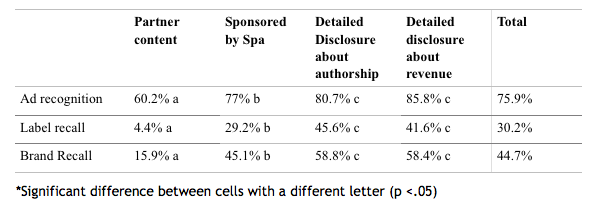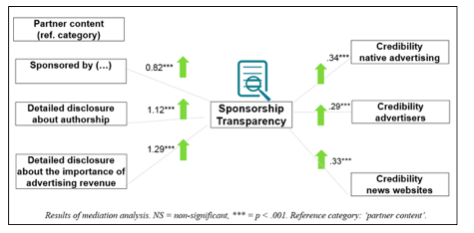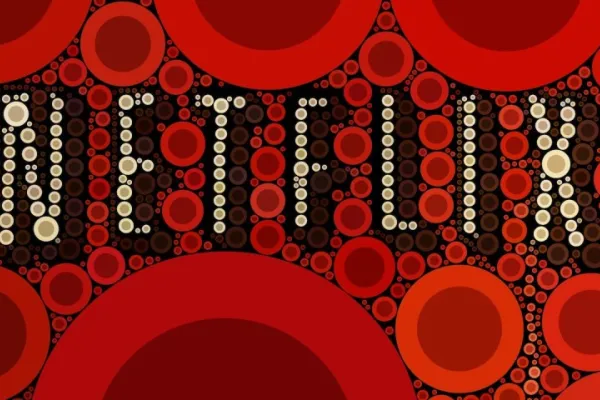
 Details
Details
Many publishers and advertisers mention the importance of transparency in native advertising contexts, at the same time, though, their label practices widely vary. Some news websites use explicit wording, such as ‘paid advertising from…’ and provide additional statements about the separation between the news media’s editorial and advertising functions.
Yet other websites have chosen to make their labels less explicit. The question is, does the type and explicitness of the label influence readers’ evaluations of the native ads, advertisers and news publishers once they recognise native ads as such? Researchers at the University of Antwerp have investigated this.
The fact that some advertisers and news media still decide to use sponsored content labels that don't clearly communicate to readers that they're viewing advertising suggests they're afraid that readers will become more critical towards the ads, advertisers and news platform when clear labeling is provided. However, study after study shows quite the opposite is true. When readers have difficulty recognizing native ads as such, and when native ads are not clearly labeled, it makes readers feel deceived when they find out afterward that were unknowingly viewing advertising.
What’s more, in some cases, even when readers can recognize native ads as such, they're still under the impression that journalists have provided the content, which damages readers’ perception of the journalists’ autonomy and the overall credibility of the news website.
For this reason, researchers at the University of Antwerp wanted to test if there is a beneficial effect of using detailed disclosure labels that provide explicit information about how the native ads were created and the news media’s decision making in the process. The researchers wanted to test if providing more detailed information could increase readers’ advertising recognition as well as their evaluations of the publishers and advertisers overall.
Some publishers already provide additional information about native ads, often behind an information button (such as The Washington Post) or below the text. The idea behind the research was to determine what effect such practice can potentially have. 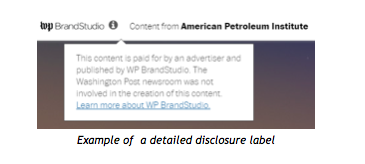
The study
In this online experimental study, which took place in Belgium, four types of labels were tested on a fictitious news website. 453 online news readers were shown a native ad from Spa water, accompanied by one of the four labels. The least detailed label, ‘partner content’ did not mention the name of the advertiser, nor the paid nature of the native ad. The second label, ‘Sponsored by Spa Water’ mentioned explicitly the name of the advertiser.
Besides these two labels, two detailed labels were also tested. One detailed label provided information about the authorship of native ads, the other detailed label made readers aware of the fact that the revenue from native ads supports the news website (see below).
The 4 labels that have been tested: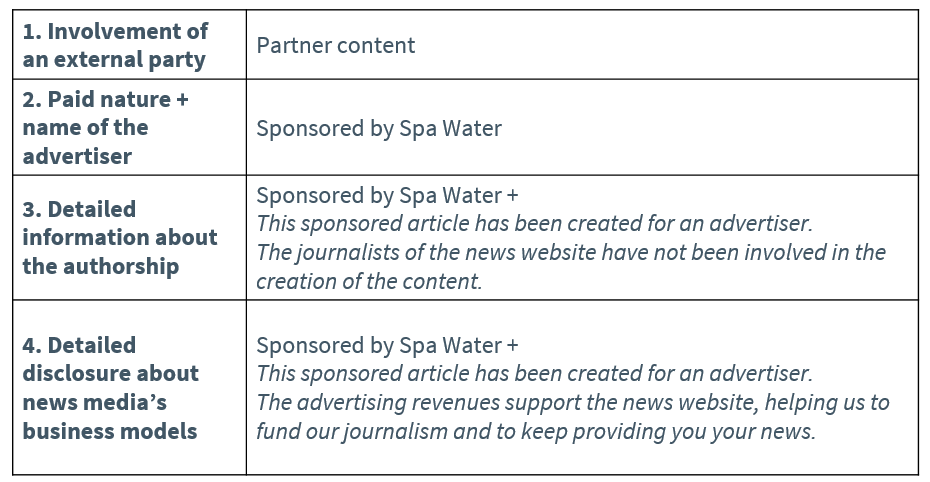
Please note that these are translated versions of the original (Flemish) labels
Results
A detailed label increases ad recognition – and brand memory!
In this particular study, readers’ advertising recognition was quite high (see the table below). This is probably because of the prominent placement of the disclosure labels (directly below the headline of the native ad, between two lines) and because the name of the advertiser and its product was also mentioned once in the text.
The detail of the label, it seems, had a significant positive influence on readers’ advertising recognition. When readers were asked why they thought they looked at advertising, only 4.4% of the readers in the ‘partner content label condition’ mentioned the label, whereas in the other three disclosure conditions many more readers mentioned the label.
Interesting to note, especially for advertisers, is that mentioning the name of the advertiser in the label (which was the case for all labels except ‘’partner content’) leads to much higher brand memory. This is important, because what is the point of putting effort into creating a great piece of content if consumers don’t even know or remember that it came from your brand?
Average ad recognition, brand recall and disclosure label recall per condition:
After measuring readers’ initial advertising recognition and label and brand recall, all participants were informed that they had viewed a native advertisement. Next, they were asked several questions to measure their perception of the level of transparency and of the native ads, advertisers and news media in general. Finally, they were questioned as to whether they'd be likely to view native ads with that specific disclosure in the future.
RELATED: Labelling native advertising: Why transparency is so important
{{cta('ac92fbe3-99a6-402d-a86c-ecbba6b64afe')}}
A detailed label leads to higher perceptions of transparency
Readers perceived native ads with the label ‘sponsored by’ as significantly more transparent compared to native ads that contained the label ‘partner content’. The two detailed disclosure labels (about the authorship and the importance of advertising revenue) even further increased perceptions of transparency. There was no difference between the two detailed labels in terms of perceptions of transparency, both were equally effective.
A detailed label leads to more trust in native ads, advertisers and news media in general
What’s more, the two most detailed labels also led to a significant increase in readers’ credibility perceptions of native ads, advertisers and news media in general. The label “Sponsored by” also increased readers’ credibility perceptions (compared to partner content), yet this effect was significantly smaller compared to the two detailed disclosure labels.
Additional data analysis showed that this positive relationship between using a more detailed label and readers’ evaluations can be explained by readers’ increase in perceived transparency. Readers appreciate it when news media and advertisers provide clear information about the native ads, which positively affects their evaluations.
Conclusion: Do not just provide a label, but make it detailed and explicit.
There is still no uniform or standard label for native ads. However, news media and advertisers should never use this ‘freedom’ to come up with labels that readers aren't likely to understand, as this could damage readers’ trust in the news media and advertisers.
Instead, news media and advertisers should use this as an opportunity to show that they really want to respond to readers’ need for more information and transparency.
Combining a label that explicitly mentions the name of the advertiser, together with additional information about the creation process and the reason behind native ads, seems to have a positive impact on readers’ evaluations of native ads, advertisers and news websites. Explicitly mentioning the name of the advertiser in a label can increase readers’ brand memory, and takes away the need to mention the advertiser in the text of an advertisement (which in fact, does irritate readers).
In the end, it’s simple: make the content of a native ad truly native, but be transparent about the fact that it is still advertising. Let’s move towards transparency.
RELATED: Should We Have a Global Standard for Labelling Native Advertising?
About the study:
The study, “Moving Towards Transparency for Native Advertisements on News Websites: A Test of More Detailed Disclosures” has been conducted by Simone Krouwer, Dr. Karolien Poels and Dr. Steve Paulussen and is published in the International Journal of Advertising in February 2019. Read the full study here; https://www.tandfonline.com/doi/full/10.1080/02650487.2019.1575107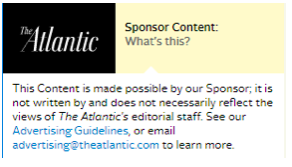
Experience Simone Krouwer as a speaker at this year's Native Advertising DAYS.
Labeling practice is always a hot topic at our annual conference. This year is bound to be no exception. Join industry experts such as Simone Krouwer, as they share their thoughts on this topic and so much more. Be sure to get your ticket today. Learn more right here.
